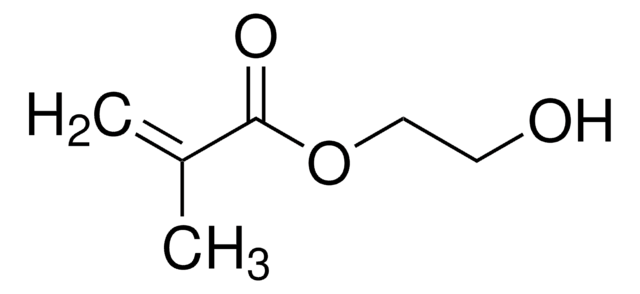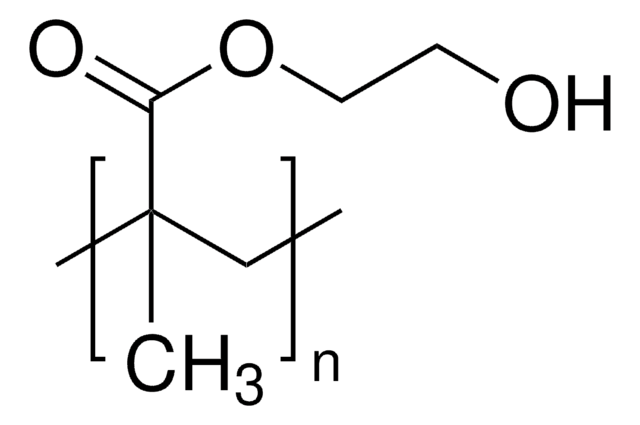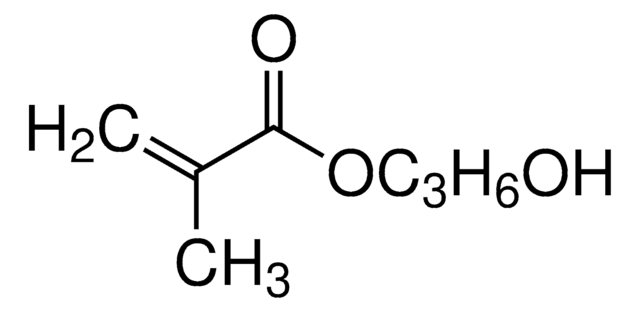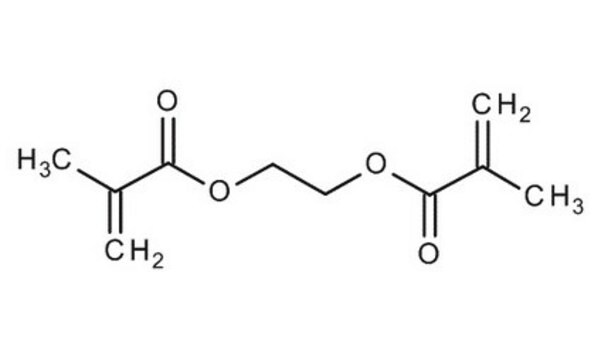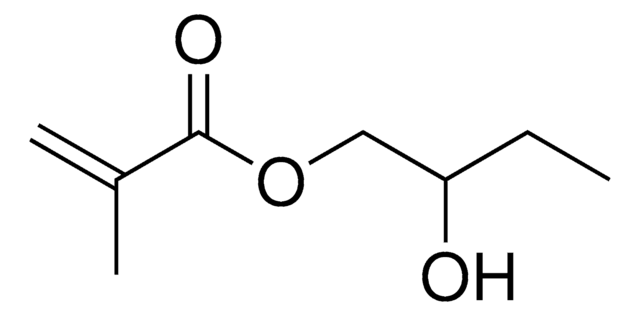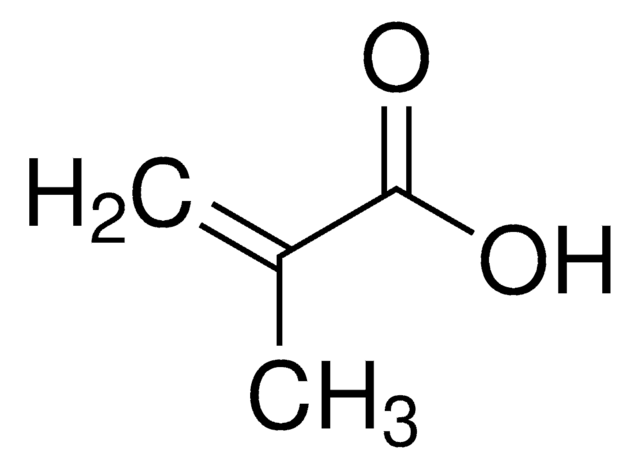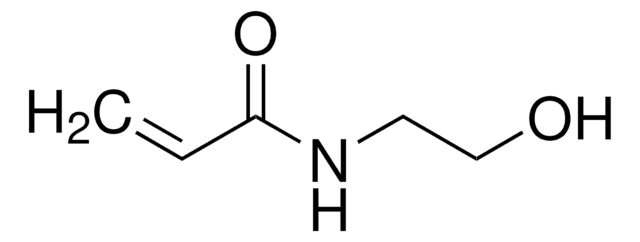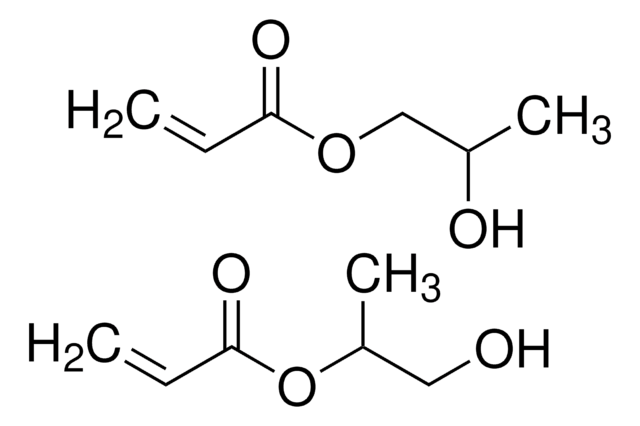Wichtige Dokumente
128635
2-Hydroxyethylmethacrylat
contains ≤250 ppm monomethyl ether hydroquinone as inhibitor, 97%
Synonym(e):
2-Hydroxyethyl-methacrylat, Glykolmethacrylat, HEMA
About This Item
Empfohlene Produkte
Dampfdichte
5 (vs air)
Qualitätsniveau
Dampfdruck
0.01 mmHg ( 25 °C)
Assay
97%
Form
liquid
Enthält
≤250 ppm monomethyl ether hydroquinone as inhibitor
Brechungsindex
n20/D 1.453 (lit.)
bp
67 °C/3.5 mmHg (lit.)
Dichte
1.073 g/mL at 25 °C (lit.)
Lagertemp.
2-8°C
SMILES String
CC(=C)C(=O)OCCO
InChI
1S/C6H10O3/c1-5(2)6(8)9-4-3-7/h7H,1,3-4H2,2H3
InChIKey
WOBHKFSMXKNTIM-UHFFFAOYSA-N
Suchen Sie nach ähnlichen Produkten? Aufrufen Leitfaden zum Produktvergleich
Verwandte Kategorien
Allgemeine Beschreibung
Anwendung
Signalwort
Warning
H-Sätze
Gefahreneinstufungen
Eye Irrit. 2 - Skin Irrit. 2 - Skin Sens. 1
Lagerklassenschlüssel
10 - Combustible liquids
WGK
WGK 1
Flammpunkt (°F)
222.8 °F - closed cup
Flammpunkt (°C)
106 °C - closed cup
Hier finden Sie alle aktuellen Versionen:
Besitzen Sie dieses Produkt bereits?
In der Dokumentenbibliothek finden Sie die Dokumentation zu den Produkten, die Sie kürzlich erworben haben.
Kunden haben sich ebenfalls angesehen
Artikel
The manufacture of monomers for use in ophthalmic applications is driven by the need for higher purity, improved reliability of manufacturing supply, but ultimately by the need for the increased comfort, convenience, and safety of contact lens wearers. Daily wear contact lenses have the potential to fill this need for many customers; however, their widespread use is constrained by higher costs compared to weekly- or monthly-based lenses. New approaches that improve cost structure and result in higher quality raw materials are needed to help make contact lenses more affordable and accelerate growth of the contact lens market.
Unser Team von Wissenschaftlern verfügt über Erfahrung in allen Forschungsbereichen einschließlich Life Science, Materialwissenschaften, chemischer Synthese, Chromatographie, Analytik und vielen mehr..
Setzen Sie sich mit dem technischen Dienst in Verbindung.